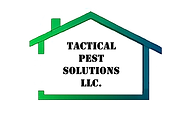Effective Ways to Handle Common Household Pests
- David Kelley
- May 26
- 4 min read
Every home is a sanctuary, but sometimes, uninvited guests in the form of household pests can crash the party. From ants marching in a line to rodents scurrying behind the walls, dealing with these nuisances requires a strategic approach. This blog post will explore effective ways to handle common household pests while providing you with practical solutions to safeguard your home.
Understanding Household Pests
Household pests come in various forms, each presenting different challenges. Common pests include ants, cockroaches, rodents, spiders, and termites. According to the National Pest Management Association, around 14% of Americans have encountered pests in their homes within the last year. Understanding their behavior, habitats, and the potential damage they can cause helps in devising effective management strategies.

Identifying Common Household Pests
Recognizing the type of pest is crucial in determining the right course of action. Here are a few common household pests and signs to look for:
Ants: Look for tiny trails on countertops and along walls. They often find food sources in the kitchen.
Cockroaches: Signs include droppings and a musty odor. They are typically found in dark, moist areas.
Rodents: Look for gnaw marks, droppings, or nests. They can damage insulation and wiring.
Spiders: Commonly found in corners and dark areas of the home. A spider's presence can indicate the availability of other pests.
Termites: Look for mud tubes and wood damage. They can significantly damage the structural integrity of your home.
Identifying these pests early on can prevent potential infestations.
Preventative Measures for Pest Control
Effective pest control begins with prevention. Here are some practical measures to deter pests from entering your home:
1. Seal Entry Points
Inspect your home for cracks and gaps in walls, windows, and doors. Seal these openings with caulk or weatherstripping to prevent pests from entering. Remember, ants can squeeze through the tiniest of openings!
2. Maintain Cleanliness
A clean home is less attractive to pests.
Store food in sealed containers and clean up spills and crumbs immediately.
Regularly take out the trash and keep garbage cans tightly closed.
Keep pet food stored properly and avoid leaving uneaten food out overnight.

3. Proper Landscaping
Maintain your yard by trimming trees and shrubs and keeping them away from your home. Thick greenery can serve as a bridge for pests to reach your house. Additionally, avoid stacking firewood against the house, as it can attract termites.
4. Fix Leaks
Many pests, including cockroaches and rodents, are attracted to moisture. Fix any leaks in plumbing and roofs, and ensure there is proper drainage in and around your home.
5. Use Natural Repellents
Consider using natural pest repellents like essential oils. Peppermint oil, for instance, is known to deter spiders and rodents. Mix a few drops with water in a spray bottle and apply it to potential entry points.
Dealing with Existing Infestations
Even with the best preventative measures, infestations can occur. Here are effective strategies to manage common household pests if they invade your space:
1. Traps
Use traps specific to the pest you are dealing with. For example:
For rodents: Snap traps or glue traps can be effective.
For ants: Ant baits attract the ants and eliminate the queen.
Important Note:
When using traps, ensure they are not placed in areas where pets or children can access them.
2. Chemical Treatments
If the infestation is severe, chemical treatments might be necessary.
Ensure to read and follow the instructions for using pesticides safely.
Consider consulting a professional for effective treatment options.
Links to pest control solutions can provide further insights into how to manage significant pest problems in your home.

3. Call a Professional
If DIY solutions do not work or if you are dealing with a larger infestation (such as termites), it may be time to call in professionals. They can assess the situation and provide tailored solutions to eliminate pests effectively.
Eco-Friendly Pest Control Options
With rising environmental concerns, many homeowners seek eco-friendly pest control options. Here are some natural solutions that can be effective:
1. Diatomaceous Earth
This powder is made from fossilized algae and can effectively eliminate ants, bed bugs, and cockroaches. Sprinkle it in areas where these pests are present, but avoid inhalation and contact with skin.
2. Boric Acid
Boric acid is another natural remedy for pest control. It’s particularly effective against cockroaches and ants. Mix it with sugar to attract pests and place it in areas where pests are active.
3. Essential Oils
Many essential oils, including peppermint, tea tree, and lavender, can repel pests. Use them in a diffuser or mix with water and spray around windows and doors.
4. Homemade Traps
You can create effective traps at home using simple ingredients. For instance, a mixture of vinegar and baking soda can attract and trap unwanted pests.
Final Thoughts on Managing Household Pests
Dealing with household pests can be overwhelming but understanding their habits and implementing preventative measures can go a long way in keeping your home pest-free. Regular maintenance and cleanliness play pivotal roles in creating an inhospitable environment for pests. If infestations occur, do not hesitate to use traps, chemical solutions, or seek professional help.
Adopting a proactive approach will save you time, stress, and potentially costly damages in the long run. Stay vigilant, and remember that effective pest control is a continuous process.







For anyone looking for safe and effective eco-friendly pest control solutions, Pesticon is a fantastic choice. They use environmentally responsible methods that are both family- and pet-friendly!